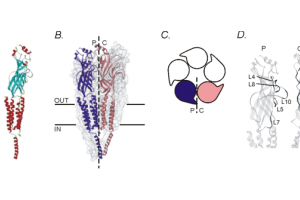
My Expertise
Structure and Function of Ion Channels, Ligand Gated Ion Channels, Patch Clamp Electrophysiology, Homology Modelling
Keywords
Fields of Research (FoR)
Receptors and membrane biology, Structural biology (incl. macromolecular modelling), Cellular nervous systemSEO tags
Biography
Dr. Trevor Lewis is a senior lecturer in Physiology within the School of Medical Sciences. He teaches across the science, medical science and medicine programs in physiology and neuroscience. His research explores the relationship between structure and function in ligand-gated ion channels and more broadly the processes underlying cellular excitability. This is investigated with the application of patch clamp electrophysiology to record...view more
Dr. Trevor Lewis is a senior lecturer in Physiology within the School of Medical Sciences. He teaches across the science, medical science and medicine programs in physiology and neuroscience. His research explores the relationship between structure and function in ligand-gated ion channels and more broadly the processes underlying cellular excitability. This is investigated with the application of patch clamp electrophysiology to record whole-cell and single channel responses, and imaging techniques for localisation of ion channels. Previous research has contributed to understanding of the molecular events leading to the opening of ligand-gated ion channels (channel gating), through the investigation of disease mutations in human glycine receptors, and the understanding ligand interactions at neuronal nicotinic acetylcholine receptors. The current focus is on novel mechanisms for activating ligand-gated ion channels at interfaces between channel subunits not typically involved in ligand binding.
My Qualifications
PhD (Physiology), Adelaide
Cert.Sci.Comm., ANU
BSc (Hons I), Adelaide
My Awards
2019 Faculty of Medicine Educator of the Year
2019 Faculty of Medicine Award for Teaching Excellence
2018 School of Medical Science Teaching Award - Outstanding contributions to the student experience
2015 UNSW Vice Chancellor's Award for Teaching Excellence - Outstanding contributions to student learning
My Research Activities
Ligand-gated ion channels are one of the fundamental building blocks for a functioning nervous system. They are responsible for the fast transmission of signals between nerve cells at specialised junctions called synapses. Research is undertaken on the human glycine receptor as a model system of ligand-gated channels in general. The overall aim is to relate the functional characteristics of the glycine receptor to what is know about its protein structure. Two strands are currently being investigated. The first is the conformational changes that follow ligand binding to allow the ion channel pore to open. This is investigating changes that occur at the interface between the transmembrane domain and the extracellular domain of the receptor, and at the inter-subunit interfaces. The second strand is the relationship between the structure of the ion channel pore and what characteristics determine ion selectivity.
Broad Research Areas:
Physiology, Neuroscience
Specific Research Keywords:
Structure and Function of Ion Channels, Ligand Gated Ion Channels, Patch Clamp Electrophysiology, Homology Modelling
Memberships
Australian Physiological Society
Australian Society for Biophysics
Society for Neuroscience
My Teaching
SOMS4888 Honours convenor
MFAC1522 Beginnings, Growth and Development B, co-convenor
NEUR3121 Molecular and Cellular Neuroscience, convenor
PHAR3102 Molecular Pharmacology (ion channels)
MFAC1521/MFAC1522 Beginnings, Growth and Development (endocrine physiology)
Location
Contact
Publications
ORCID as entered in ROS
Research Activities
This project seeks to provide insights into new mechanisms that could be used to enhance or inhibit neuronal signalling. The family of pentameric neurotransmitter receptors that are key components in the process of neuronal signalling and are the target of this study. It will investigate the molecular motions that occur when the receptor shifts from the resting state to the activated state in the presence of neurotransmitter. This critical to understanding the normal function of these receptors in the brain and how they can be modulated.
Each pentameric neurotransmitter receptor (or…
